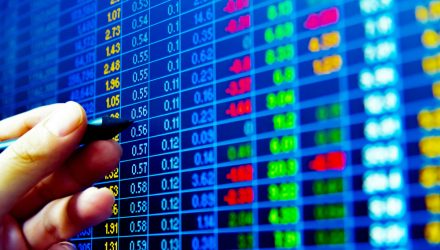The coronavirus and oil prices are making a formidable one-two punch for investors, fueling an even more fervent flight to risk-off, safe-haven assets like bonds. This caused the 10-year Treasury yield to dip below the 0.5% yield rate for the first time ever.
Per a CNBC report, the “yield on the benchmark U.S. 10-year Treasury briefly touched an all-time low of 0.487% in overnight trading Sunday. The yield was last trading at 0.536%. Bond yields move inversely with prices. The benchmark rate has tumbled 40 basis points in March alone. The 30-year Treasury yield also hit a record low of 0.974%, breaching the 1% threshold for the first time in history.”
“There has been an extreme ‘risk-off’ move in the financial markets due to the fear surrounding the COVID-19 virus and the most recent Saudi oil decision,” Tony Dwyer, Canaccord Genuity’ market Strategist, said in a note on Sunday, per the CNBC report.
“There was a sharp spike in rates following that extreme in 2008 and we expect something similar as the global monetary and fiscal stimulus is rolled out,” Dwyer said.
10 Year Treasury Rate data by YCharts
Getting Core Bond Exposure and a Bit Extra
The iShares Core U.S. Aggregate Bond ETF (NYSEArca: AGG) has been the go-to ETF when it comes to getting core bond exposure, but it’s certainly not the only option. When investors want a bit more yield in exchange for more credit risk, they can opt for funds like the iShares Core Total US Bond Market ETF (NasdaqGM: IUSB).
IUSB seeks to track the investment results of the Bloomberg Barclays U.S. Universal Index. The fund generally will invest most of its assets in the component securities of the index and may also invest in certain futures, options and swap contracts, cash and cash equivalents, including shares of money market funds advised by BFA or its affiliates, as well as in securities not included in the underlying index, but which BFA believes will help the fund track the underlying index.
The index measures the performance of U.S. dollar-denominated taxable bonds that are rated either investment-grade or high yield.
“The benchmark index represents a union of the Bloomberg Barclays U.S. Aggregate Bond Index (“the AGG”) with other sectors not represented in the AGG, like high-yield bonds,” wrote Neal Kosciulek in Morningstar. “The additional sectors are small relative to those already contained in the AGG, so there is a large overlap between this fund and the AGG. The inclusion of corporate debt rated below investment-grade enables the fund to generate higher yields and hold on to bonds that are downgraded to junk from investment-grade (“fallen angels”), which may be temporarily undervalued because of concentrated selling pressure from investment-grade managers.”
For more market trends, visit ETF Trends.


